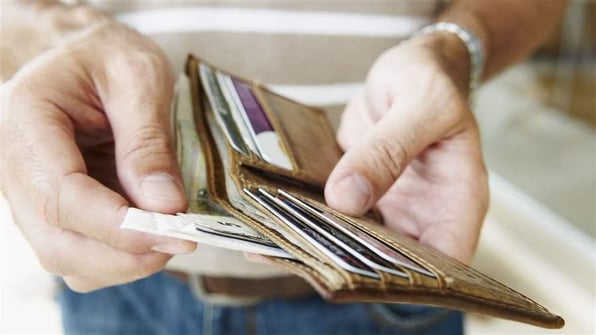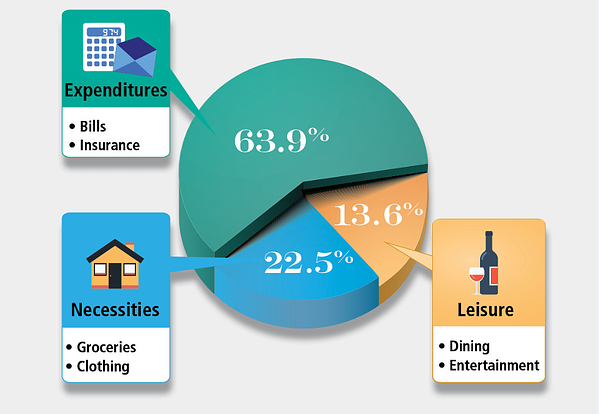Engagement & Loyalty Tips Delivered to Your Inbox
Trending Posts
-
 40 Inexpensive Customer Appreciation Ideas
40 Inexpensive Customer Appreciation Ideas
-
 Travel and Tourism Statistics: The Ultimate Collection
Travel and Tourism Statistics: The Ultimate Collection
-
.jpeg) Loyalty & Discount Program Statistics You Should Know in 2025: The Ultimate Collection
Loyalty & Discount Program Statistics You Should Know in 2025: The Ultimate Collection
-
 Research: How Far Will Consumers Travel to Make Routine Purchases?
Research: How Far Will Consumers Travel to Make Routine Purchases?
-
 40 Specific Member Engagement Tactics Any Organization Can Use
40 Specific Member Engagement Tactics Any Organization Can Use
Filter Topics
- customer loyalty (199)
- Customer Engagement (188)
- Member Benefits (141)
- Access Development (123)
- Discount Programs (96)
- member engagement (73)
- Mobile Coupons (56)
- Customer Incentives (54)
- Membership Organizations (37)
- loyalty programs (35)
- member loyalty (33)
- Ongoing Incentive Programs (31)
- member retention (31)
- News (30)
- Merchant Discount Network (28)
- Rewards Programs (24)
- customer retention (22)
- partnership marketing (21)
- member acquisition (20)
- Payment Card Rewards (19)
- employee engagement (19)
- membership benefits programs (18)
- discount program (15)
- private discount programs (15)
- association marketing (13)
- membership discounts (13)
- Card-Linked Offers (12)
- customer service (12)
- Discounts (11)
- Employee Discount Programs (11)
- Points and Miles Programs (11)
- coupons (11)
- Customer Success (10)
- Employee Engagement + Loyalty (10)
- Travel (10)
- member engagement strategies (10)
- social media (10)
- statistics (10)
- HR (9)
- Member Success (9)
- VALUE ADDED BENEFITS (9)
- consumer behavior (9)
- member travel benefits (9)
- millennial statistics (9)
- Educator Access (8)
- coupon statistics (8)
- dave bona (8)
- member engagement ideas (8)
- membership benefits packages (8)
- merchant funded rewards (8)
- white label travel platforms (8)
- PowerDeals (7)
- associations (7)
- loyalty statistics (7)
- membership benefits (7)
- best employee discount programs (6)
- brandon carter (6)
- consumer trends (6)
- membership-organization (6)
- mobile discount programs (6)
- timeshare loyalty (6)
- Employee Benefits (5)
- Increasing Cardholder Spending (5)
- best places to work (5)
- coupon marketing (5)
- discount networks (5)
- education (5)
- member incentives (5)
- membership perks (5)
- mobile coupon network (5)
- mobile engagement (5)
- travel statistics (5)
- value enhancement (5)
- white label travel solutions (5)
- Access Fundraising (4)
- Disney (4)
- Disney Parks (4)
- Retail (4)
- Utah (4)
- cash back rewards (4)
- coupon strategies (4)
- disneyland (4)
- infographics (4)
- kelly passey (4)
- twitter (4)
- value added member benefits (4)
- walt disney world (4)
- white label (4)
- Ancillary Revenue (3)
- Benefits Trends (3)
- Charities (3)
- Customer Services (3)
- Fundraising Companies (3)
- Retention (3)
- School Fundraising (3)
- branding (3)
- consumer engagement (3)
- discount network (3)
- earning engagement (3)
- emily hayes (3)
- employee perks (3)
- employee retention (3)
- ginayoder (3)
- local discount content (3)
- membership marketing (3)
- micro-redemption (3)
- millennials (3)
- mobile loyalty (3)
- mobile wallet adoption (3)
- premium incentives (3)
- private label (3)
- research (3)
- turnkey (3)
- upsell programs (3)
- value proposition (3)
- youth fundraising (3)
- zions bank (3)
- Acquisition (2)
- Alumni Relations & Engagement (2)
- Larry Maxfield (2)
- TriQuest (2)
- Utah Food Bank (2)
- alumni benefits (2)
- benefits packages (2)
- charity (2)
- client success (2)
- customer incentive programs (2)
- earning incremental revenue (2)
- ecommerce (2)
- facebook (2)
- farm bureaus (2)
- holidays (2)
- in the news (2)
- incentive programs (2)
- incentives (2)
- marketing (2)
- merchants (2)
- millennials and money (2)
- mobile (2)
- mobile deals (2)
- mobile payments (2)
- mobile payments adoption (2)
- money2020 (2)
- non-dues revenue (2)
- offer sourcing (2)
- onboarding (2)
- points program rewards (2)
- press (2)
- press releases (2)
- rewards (2)
- soliciting customer feedback (2)
- surprise and delight (2)
- travel club incentives (2)
- unions (2)
- utah best companies to work for (2)
- utah jobs (2)
- 2019 Employee Benefits (1)
- API (1)
- Artificial Intelligence (1)
- Awards (1)
- Chat-GPT (1)
- Dialogflow (1)
- Entertainment & Recreation (1)
- Fundraising (1)
- IT (1)
- Mobile App (1)
- NLP (1)
- Natural Language Processing (1)
- Non-fungible tokens (1)
- Online Facts (1)
- OpenAI (1)
- PSEA (1)
- Rasa (1)
- Storytelling (1)
- Testimonials (1)
- VAESE (1)
- alumni (1)
- alumni discount program (1)
- alumni discount programs (1)
- alumni engagement (1)
- amazon.com (1)
- baby boomers (1)
- benchmarks (1)
- blogging (1)
- bonding (1)
- brand impressions (1)
- business finance (1)
- business travel statistics (1)
- casey kleinman (1)
- chatbots (1)
- check ins (1)
- conferences (1)
- corporate culture (1)
- corporate perks (1)
- coupon aggregation (1)
- coupon stats (1)
- craig christiansen (1)
- credit union benefits (1)
- cryptocurrency (1)
- cupcakes (1)
- customer roi (1)
- dave cook (1)
- david brebner (1)
- deals industry (1)
- developments (1)
- discounting tips (1)
- dues-paying (1)
- education associations (1)
- emilyhayes (1)
- employee incentives (1)
- executives (1)
- feeding america (1)
- financial management (1)
- financial wellness (1)
- finovate (1)
- finovatespring (1)
- free employee discount programs (1)
- fulfillment materials (1)
- gamification (1)
- generation x (1)
- generation z (1)
- geocommerce (1)
- gillette (1)
- giveaways (1)
- guest posts (1)
- health & wellness (1)
- higher education (1)
- humor (1)
- ibeacon (1)
- inventives (1)
- lbs (1)
- leadership (1)
- leap year (1)
- local merchants (1)
- loyalty platform (1)
- mark holland (1)
- mark murdock (1)
- media (1)
- member fulfillment (1)
- member services (1)
- micro-moments (1)
- microredemption (1)
- miles program rewards (1)
- millennials statistics (1)
- mindful insights (1)
- mobile commerce (1)
- mobile discounts (1)
- mobile offers (1)
- mobile wallets (1)
- nacha payments (1)
- non-profit management (1)
- online fundraising (1)
- online travel (1)
- organizational development (1)
- payments 2012 (1)
- paypal (1)
- podcasts (1)
- points and miles rewards (1)
- points programs (1)
- product innovation (1)
- pymnts.com (1)
- reduce points program costs (1)
- resort loyalty programs (1)
- retaining coupon customers (1)
- savings across america (1)
- social consciousness (1)
- soda (1)
- softcard (1)
- surveys (1)
- teachers (1)
- texas (1)
- the chocolate (1)
- top of wallet (1)
- top workplaces (1)
- tourism statistics (1)
- travis isaacson (1)
- trends (1)
- vacation statistics (1)
- virginia farm bureau (1)
- walmart (1)
- what we're reading (1)
- working at access (1)
- working for access (1)
See more blogs
All Posts

BLOG
What Customer Loyalty and 50 First Dates Have in...
10 years ago Adam Sandler and Drew Barrymore starred in 50 First Dates, about a man in love with an...

BLOG
6 Reasons Discount Programs are Growing Among...
Back in the day people joined associations, paid their dues and were content just to assume that...

BLOG
A Look at How the Modern Consumer Spends Their...
There's a scene in the new HBO comedy series Silicon Valley where a number of startups are trying...

 ith, such as groceries and personal care products), and Leisure (true discretionary spending, such as dining out, memberships, and entertainment).
ith, such as groceries and personal care products), and Leisure (true discretionary spending, such as dining out, memberships, and entertainment).

Share your Comment.